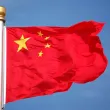China has temporarily lifted its export restrictions on critical minerals — gallium, germanium, and antimony — to the United States, signaling a cautious recalibration in its trade strategy. These minerals are essential for the production of semiconductors, electric vehicles, and defense technologies. The decision marks a significant development in the ongoing geopolitical and economic tensions between the world’s two largest economies. Analysts view this as a strategic pause rather than a policy reversal, aimed at stabilizing markets, reducing diplomatic friction, and maintaining China’s role as a key supplier in the global technology value chain.
---
Strategic Shift in Trade Policy
Beijing’s decision to suspend the export ban comes after months of heightened global concern over supply chain vulnerabilities. The earlier restrictions, imposed as part of China’s broader response to U.S. technology export controls, had triggered alarm among Western manufacturers dependent on these raw materials for semiconductor wafers, radar systems, and advanced batteries.
By temporarily reopening the export channel, China appears to be balancing its economic pragmatism with strategic signaling. While the move may ease immediate shortages, experts believe it does not indicate a full-scale policy reversal but rather a tactical adjustment intended to preserve leverage in future negotiations.
---
Global Impact on Critical Mineral Supply Chains
The suspension of the ban is likely to stabilize global prices and restore short-term supply confidence for industries reliant on these minerals. Gallium and germanium are indispensable for high-performance chips and telecommunications, while antimony plays a vital role in flame retardants and military-grade alloys.
Before the restrictions, China accounted for over 90 percent of the world’s gallium and germanium production, giving it immense influence over global supply. The brief relaxation, therefore, holds major implications for the semiconductor and clean energy industries, which had been scrambling to secure alternate sources in countries like Canada, Australia, and South Korea.
---
Economic and Diplomatic Calculations
Economists suggest that Beijing’s decision could be a strategic diplomatic gesture, aimed at reducing immediate trade tensions while reinforcing its indispensable role in the global technology ecosystem. The U.S.-China economic dialogue, which has seen periodic progress in recent months, may have influenced the decision to avoid further escalation.
At the same time, Chinese policymakers are under pressure to protect domestic manufacturers who benefit from stable export revenues. The decision to pause rather than fully revoke the ban gives Beijing flexibility to reinstate restrictions if geopolitical dynamics deteriorate.
---
Market Reactions and Future Outlook
Following the announcement, market analysts noted a decline in speculative price surges for gallium and germanium, which had previously spiked after the initial restrictions. The move could also provide temporary relief to chipmakers in the United States, Japan, and Europe, which have faced rising costs and production delays due to material scarcity.
However, experts warn that the reprieve may be short-lived. The underlying tension between technological autonomy and economic interdependence remains unresolved. China’s control over critical mineral exports continues to be a powerful geopolitical instrument, one it can deploy selectively to influence trade dynamics and strategic partnerships.
---
Conclusion
China’s suspension of its export ban on gallium, germanium, and antimony reflects a complex interplay of diplomacy, economics, and strategic foresight. While the move offers short-term market stability, it also serves as a reminder of the fragile balance underpinning global supply chains in the age of technological rivalry.
For now, the world’s semiconductor and defense sectors can breathe easier—but the long-term landscape remains uncertain, shaped by the ever-evolving calculus of global power and economic interdependence.

Comments